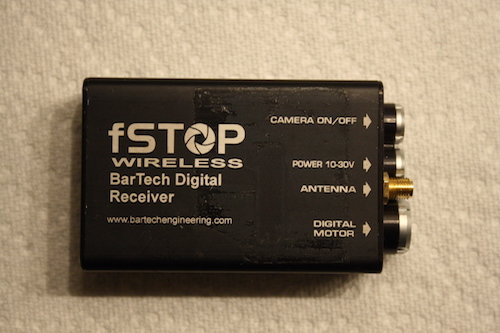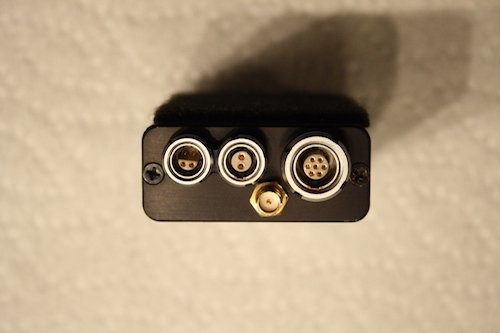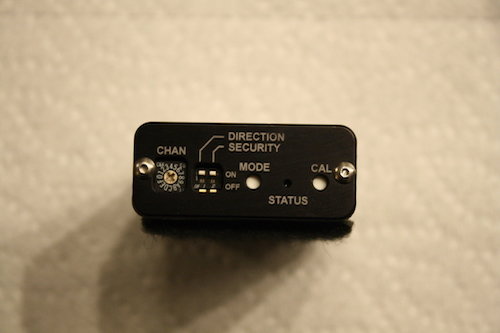
Kyryll Sobolev
Basic Member-
Posts
177 -
Joined
-
Last visited
Everything posted by Kyryll Sobolev
-
i have just worked on a project with zeiss master anamorphics (DP was guy godfree) they are exceptional lenses, but very clean image indeed it is up to you to decide whether you like it AJ, i think you may be talking about a "flare set" for these lenses, which would replace the front and rear element. otherwise they are true anamorphic (you can see that very well in this video ) for dominik's questions: are these in high demand - probably is the resale price high - yup are these a good investment - for a rental house, yes :) if you are a cinematographer, these would be an exceptionally expensive tool to have for occasional use unless you can agree to consign them with a rental house ahead of time an like AJ says, this type of investment is akin to the stock market. if you have cash to burn, these lenses will pay for themselves over time
-
Converted my vintage Lomo sphericals finally!
Kyryll Sobolev replied to Adam Frisch FSF's topic in Lenses & Lens Accessories
yes, he is doing two sets for me at the moment -
Converted my vintage Lomo sphericals finally!
Kyryll Sobolev replied to Adam Frisch FSF's topic in Lenses & Lens Accessories
ooh, very cool how much does it cost? i am fixing up my sets of lomos with olex in ukraine and then adding imperial scale focus rings. but they will retain the original housing, including the rotating front unfortunately -
Matte Box and Diopter recommendations
Kyryll Sobolev replied to Seth Baldwin's topic in Camera Operating & Gear
you will have to use a clip-on mattebox, because i don't think that studio MBs come with a diopter stage (someone correct me if i'm wrong) i have not worked with lomo anamorphics before, but internets tell me that 50mm, 75mm, and 100mm have a front diameter of 110mm, so you can use the standard arri 4x5.65 clip-on MB usually diopters come in 138mm diameter, and diopters up to +1 can fit inside the normal filter holders or even the 138mm stage meant for polarizers, but a stronger diopter bulges out too far and will not fit in ask the rental house if they have an arri-made diopter stage for the clip-on MB (like this one) or a non-arri stage like this in my experience, nobody carries these stages, and if they do - they are usually rented out normally i skip the mattebox and tape the diopter directly to the lens -
Director of Photography - Rights
Kyryll Sobolev replied to Carlos Herrera's topic in General Discussion
there was a similar discussion on the canadian society of cinematographers facebook page, and jeremy benning noted that you, as a DP, can ask in your contract for a "right of first refusal" clause so if there is tinkering at a later point, you get consulted first -
Color of framelines
Kyryll Sobolev replied to Tobey Nordenlund's topic in Camera Assistant / DIT & Gear
i think it is a digital age manifestation of the colour-coding tradition where "A" camera gets colour red and "B" camera gets blue, "C" will get yellow, "D" green. (also works as a rule of thumb for actor marks - #1 is red, #2 is blue, etc.) you may see this on slates if you watch BTS videos, but also ACs will usually colour-code all accessories/cables/etc in prep it is certainly not a rule nor expectation. some operators just prefer white framelines, and i have never heard of anyone at the video-village ask to change the colours -
according to that picture: 27 volts (+/- 2.7 V) from a plug, or 12-15 V from a battery 27 volts was (and i think still is) standard power supply on aircraft there is, of course, a GOST for that - http://docs.cntd.ru/document/gost-r-54073-2010
-
this is from russian interwebs AKS was a family of cameras designed for aerial photography the letters stand for Apparat KinoS'emochnyj, which means, as you can easily guess - Cinema Apparatus (not very creative branding... as you know, the soviet lenses were marked OKS - Ob'ektiv KinoS'emochnyj, or, Cinema Lens) AKS-4 was copied from Arriflex 35 designs captured in the war (so says russian wikipedia) this site here has a little more info - http://kinofototeh.ucoz.ru/index/0-88 in 1938 Lenkinap started making documentary cameras KS (direct copy of Eyemo) AKS was a modification of KS - changes included the viewfinder, an added hotshoe (or something like it) to attach an aerial gunsight, and instead of a detacheable crank they added a crank with a reduction mechanism to make it easier for a pilot to load the spring if i'm not mistaken, AKS series were manufactured by KMZ (Kransogorsk Mechanical Factory)
-
sold
-
$500 CAD+shipping receiver only (no cables or antennas) it was one of my backup receivers, but i don't need this one any more. it work perfectly fine - i can show it on skype/facetime/etc if needed. minimal cosmetic wear, except for the requisite velcro gunk on the front. i can sell cables if needed (power, motor, run/stop). antennas you would be better off to buy from plc electronics. located in toronto, canada. shipping would be minimal on a package this small.
-
a lot of cameras to this day drift their TC after jamming, unless you ride the clock-it on the camera. the TC slate is usually more reliable to run in sync with the audio mixer's gear. you can actually playback the camera, and see if the camera's TC on the recorded clip is off. so you can fix drifting issues as they happen (so you will get a less angry email from the editors tomorrow). same reason if you jump back and forth between offspeed and project speed. cameras may not keep internal TC correctly. continuity likes to see TC on the slate for various reasons, especially when video village monitoring is set to 'clean' video (just the frame, without all the camera info junk) ADs like to keep score of first shot of the day/after lunch/etc. more informally, slate TC is often used by ADs to see what time it is if they need to dig into overtime or ask for a few more minutes to finish a shot
-
Explain camera report forms please!
Kyryll Sobolev replied to Hank Vadim's topic in Camera Assistant / DIT & Gear
audio people have their own paperwork. normally they give us that paperwork at end of day, and it goes along with camera reports to the lab (so some time after wrap transport will be asking camera assistants 'how long until film and sound is ready?') -
Who developed the OCT-19 mount?
Kyryll Sobolev replied to Phil Rhodes's topic in Lenses & Lens Accessories
...and one more thing to note, i think i saw alex kalynychenko mention it somewhere online - they didn't really ask for an OCT mount set of lenses before in the way like we do here (are those EF mount? pana mount? PL mount...) you would get, or sign out, a camera body for a production, and the set of lenses came with that particular body very obviously that led to problems later on because you couldn't always use older sets of lenses with newer design bodies -
Who developed the OCT-19 mount?
Kyryll Sobolev replied to Phil Rhodes's topic in Lenses & Lens Accessories
i asked optika elite people to shed some light on the story, but it seems even they don't know exactly how the mount was developed however, they were very helpful and actually sent me a copy of the OCT 19-144-83 document you can access it here the last page of the scan actually has detailed measurements for PL mount. so organizations involved in creating the standart are: Ekran - but only seems to be in a consulting role of some sort, the only person credited is a "deputy director general/CEO" MKBK - with lead designer B.F. Gordeev (who developed the first Kinor in 1965) NIKFI i would hazard a guess that the drive to develop a mount similar to PL was not an official directive, but very likely came from within MKBK. since their workers did go on professional visit to the usa and western europe, they got to see how things were done in the west. -
Cooke Cinevarotal 25-250mm T3.9 mkii PL-mount
Kyryll Sobolev replied to Kyryll Sobolev's topic in Cine Marketplace
sold -
Sensor/ Film size and depth of field
Kyryll Sobolev replied to Mathew Collins's topic in General Discussion
whatever format you are shooting on, use the known CoC values for that format (or plug in your own ones) to calculate dof while you are on set what happens to the shot material after is a different story - you can project it to youtube or imax screen if you like -
Cooke Cinevarotal 25-250mm T3.9 mkii PL-mount
Kyryll Sobolev replied to Kyryll Sobolev's topic in Cine Marketplace
$4250 -
Sensor/ Film size and depth of field
Kyryll Sobolev replied to Mathew Collins's topic in General Discussion
matthew think of it this way. theoretically (for lack of better term) sensor size has no effect on dof practically, however, it very much does say you have a lens on a 16mm camera then mount that lens to a 8x10 camera, or project it onto a 111'x32' plane what happens to dof in those cases? nothing happens. it remains the same but, practically speaking, there is no sense using a 16mm lens on larger formats, you will just get vignetting. so you use a longer lens, or one that covers the larger format, and as a result, you end up with less dof. -
Who developed the OCT-19 mount?
Kyryll Sobolev replied to Phil Rhodes's topic in Lenses & Lens Accessories
i think it will be difficult to determine when and where exactly the mount was developed without visiting archives/libraries in russia though there is interesting information available online, some of which you may already know: OST stands for "Industry Standard" (Otraslevvoj Standart) - so something specific to a particular industry GOST is a "State Standart (Gosudarstvennyj Standart) and in this case ОСТ-19-144-83 became GOST 26157-84 (view here), which i believe is still valid to this day officially OCT-19 came into effect in 1984 (!) - see this document here on page 4 the paragraph reads "Starting in 1984, lens housings for 35- and 70-mm film will be manufactured with a single mount for installation into film cameras, which have a mount diameter (посадочный диаметр...?) equal to 68mm and flange distance (рабочий отрезок) of 61mm (OCT 19-144-83). In 1989, 35-mm film lenses will be made available with Arri PL mount, to make our lenses compatible with western film cameras. This overview is based on the materials provided by CKBK Ekran, with contributions from lab results of lens tests by NIKFI" but unoffifically... who knows :) it was very likely developed prior to the actual introduction of Konvas 1КСР-2М (whose designed was meant to use a single lens, instead of its turret predecessor) from the materials i have read, it seems that NIKFI and MKBK would have been involved in the creation of what would become OCT-19 mount NIKFI is Cinema and Research Institute (Научно-Исследовательский КиноФотоинститут // http://www.holography.ru/nikfieng.htm, http://www.nikfi.ru/) MKBK is Moscow Cinema Equipment Construction Bureau (Московское конструкторское бюро киноаппаратуры) Moskinap, like Lomo, at that time were the manufacturing plants. The design came from above-standing structures. and yes, OCT-18 is of a slang term, not an actual standart OCT's starting with 18 cover things like lip gloss (18-209-75), soap (18-235-75), and mineral water (18-224-82) -
Cooke Cinevarotal 25-250mm T3.9 mkii PL-mount
Kyryll Sobolev replied to Kyryll Sobolev's topic in Cine Marketplace
$4500 -
Cooke Cinevarotal 25-250mm T3.9 mkii PL-mount
Kyryll Sobolev replied to Kyryll Sobolev's topic in Cine Marketplace
new price - $5000 -
Screen direction error in Manchester by the Sea
Kyryll Sobolev replied to Randy Walsh's topic in Camera Operating & Gear
kurosawa breaks the axis - people study it in school lonergan breaks the axis - people complain on the internet :) sign of the times! -
Screen direction error in Manchester by the Sea
Kyryll Sobolev replied to Randy Walsh's topic in Camera Operating & Gear
c'est la? https://youtu.be/5lwn7DzHbrs but randy i think you answered the question - it was disturbing to you i would guess that was the intended purpose







